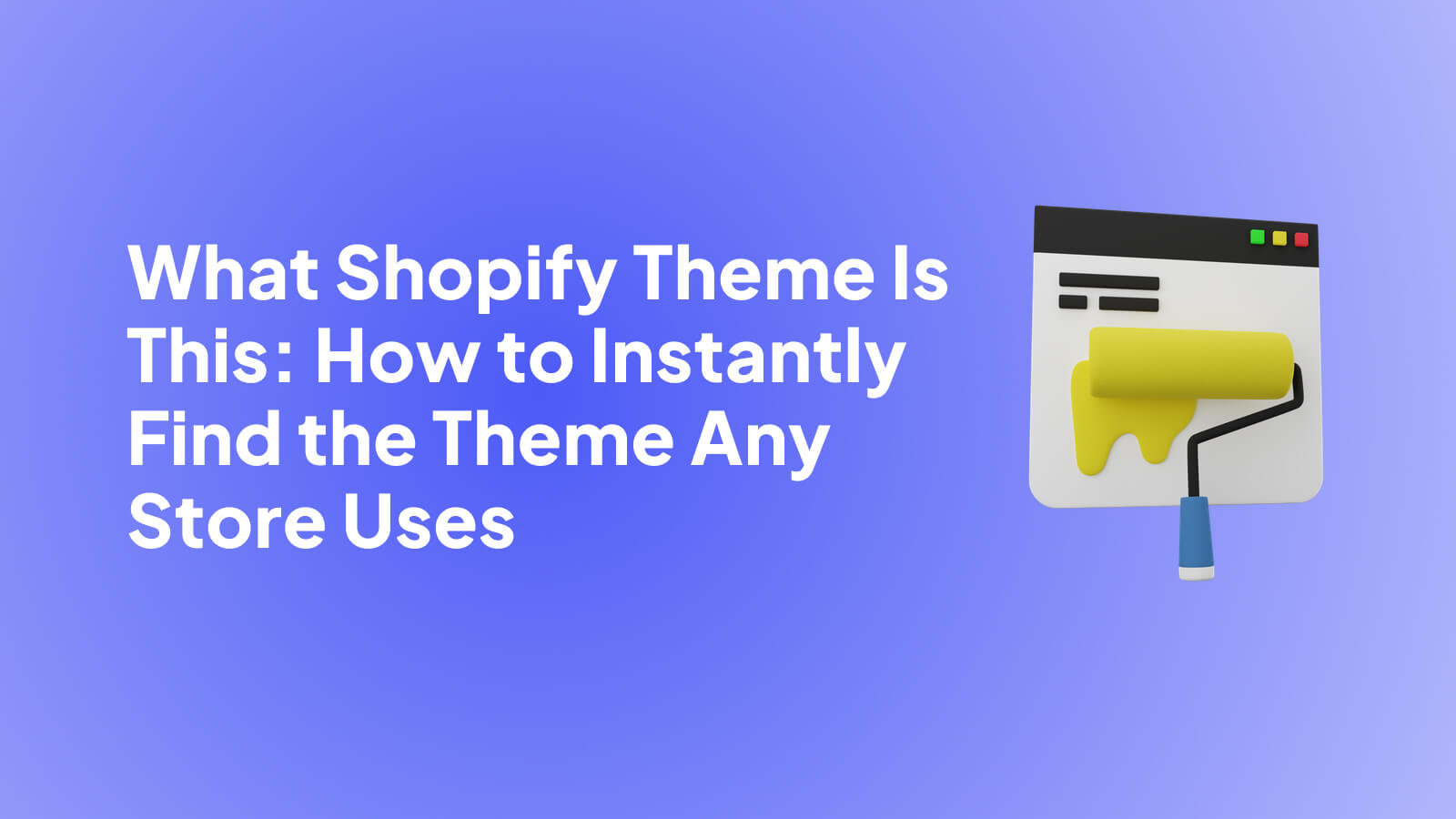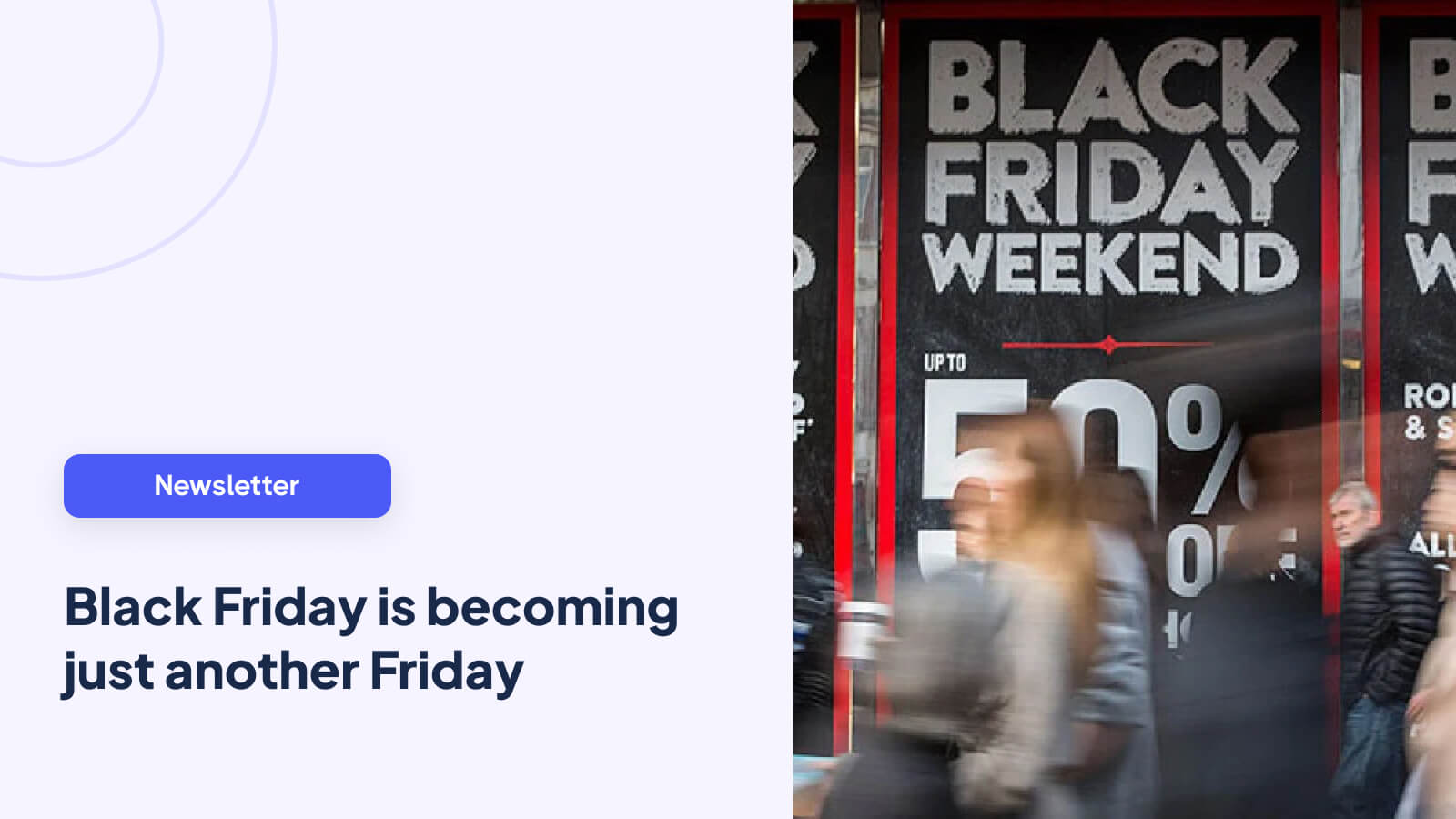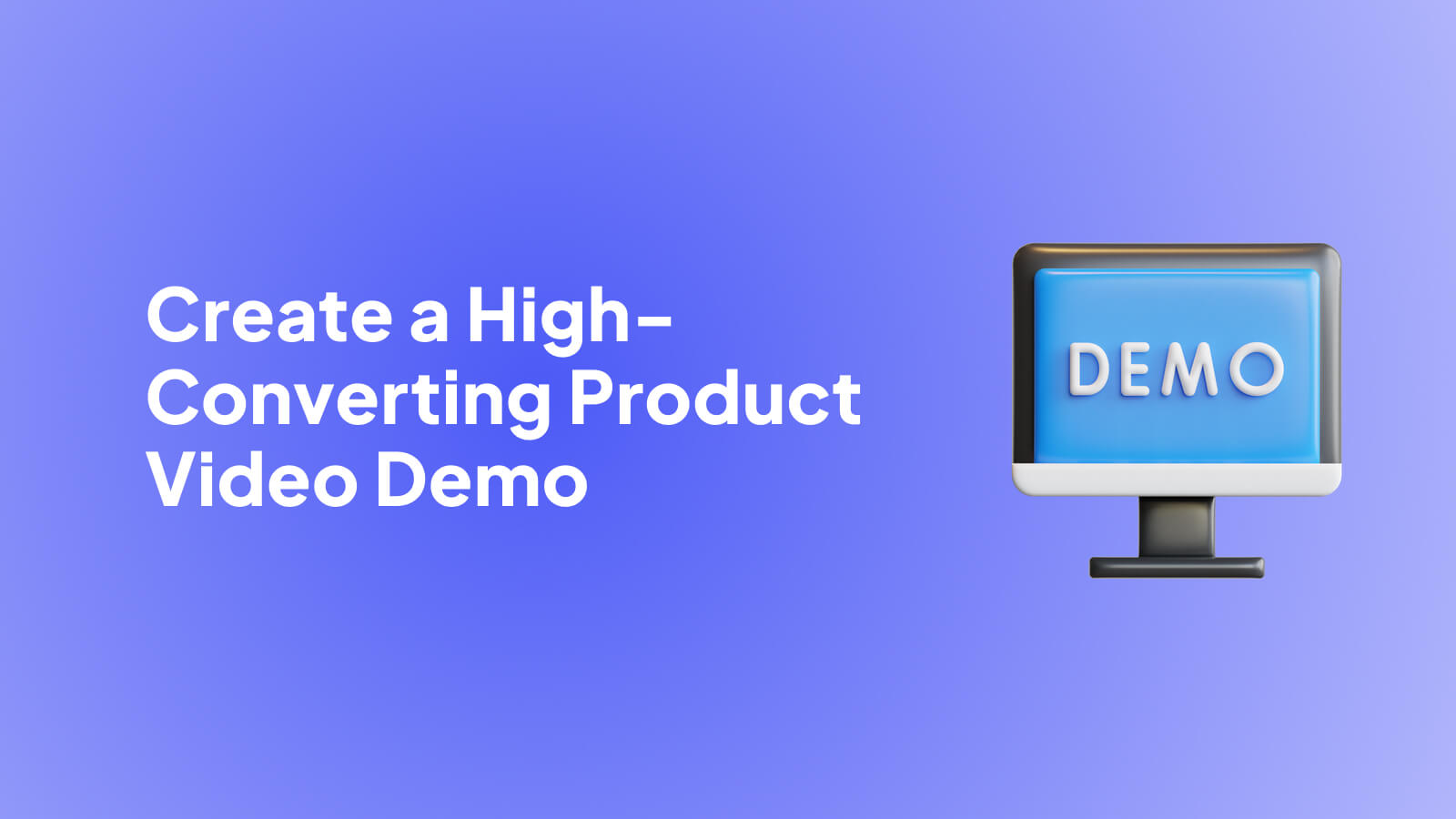
A standard product video demo is a fantastic tool. It shows customers exactly how your product works, walks them through the features, and helps build the confidence they need to make a purchase. But what if you could take that a step further? A shoppable video demo does just that, embedding "buy" buttons right into the video so viewers can buy the second they feel that spark of inspiration.
Why Shoppable Videos Outperform Standard Demos
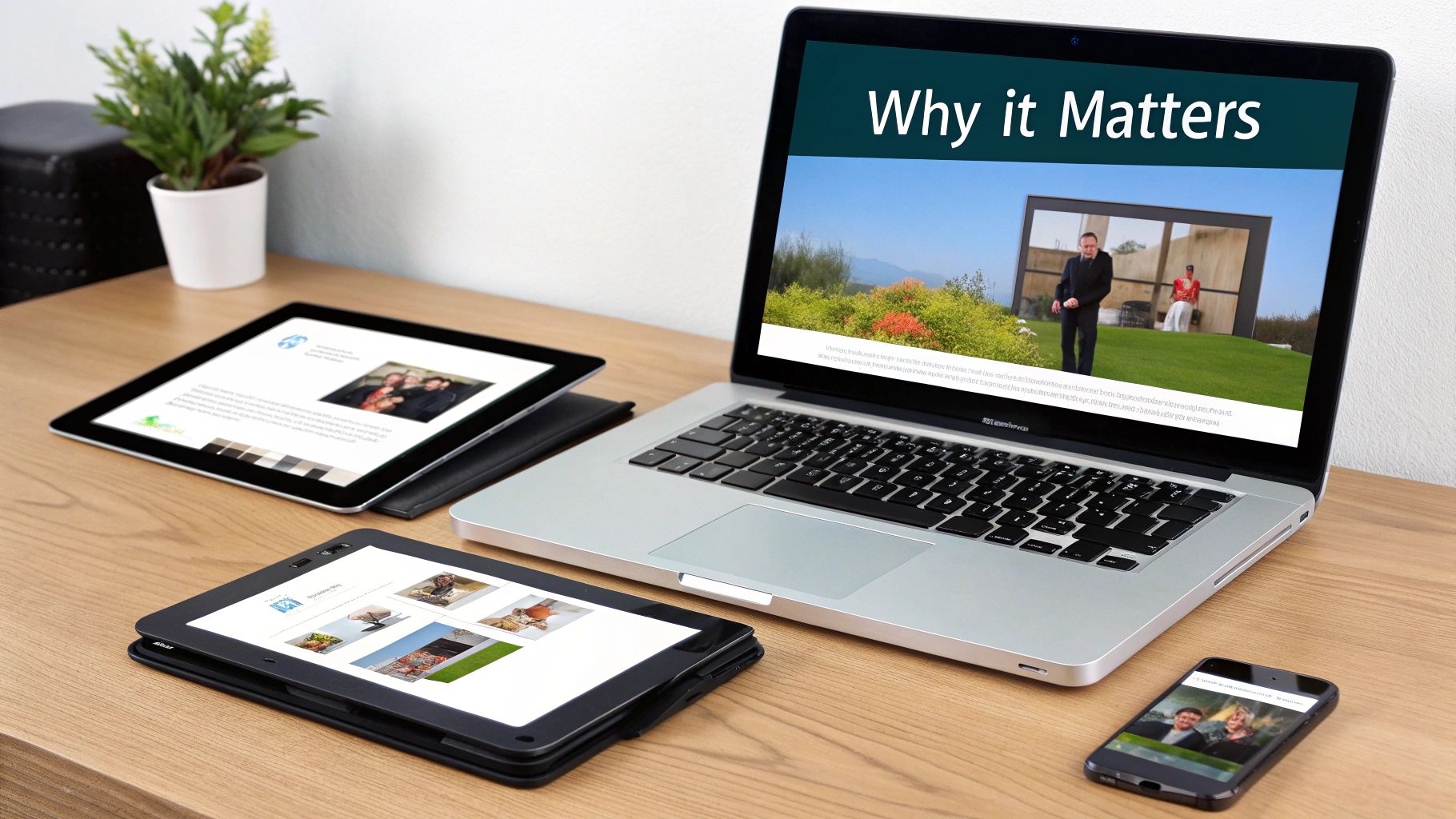
Making the jump from a regular product video to a shoppable one is about turning a passive viewing session into an active, engaging buying journey. Any video is a good start, but the traditional format leaves a huge gap between a customer's interest and their action. They might love what they see, but they still have to leave the video, find the product page, and add it to their cart. Every extra click is a chance for them to get distracted or change their mind.
A shoppable product video demo smashes that barrier. It essentially collapses the entire sales funnel into one seamless piece of content.
The concept is surprisingly simple but incredibly effective: Don't force your customers to go searching for the "buy" button. Bring the checkout to them while their excitement is at its peak. This one change cuts down on hesitation and captures those impulse buys that would otherwise slip away.
The Power of Interactive Hotspots
Think about the confidence boost you get from picking up a product in a physical store. Shoppable videos bring that tangible feeling to the digital world. By adding interactive "hotspots" or clickable tags, you can layer in extra details, show off different product angles, or link to specific variations—all without breaking the flow of the video.
This interactivity accomplishes a few critical things for your brand:
- It Builds Trust: Being upfront with all the information shows transparency and reassures customers.
- It Boosts Engagement: Viewers are no longer just passive watchers. They’re actively exploring the product on their own terms.
- It Reduces Purchase Anxiety: You can answer questions and handle potential objections right inside the video, before they become deal-breakers.
To really appreciate the difference, let's compare the two formats side-by-side.
Key Benefits of Shoppable Videos vs Standard Videos

The table makes it pretty clear. A standard video informs, but a shoppable video actually sells. One tells a story, while the other invites the customer to become part of it.
The Proof Is in the Numbers
Moving toward interactive video isn't just a fleeting trend; it's a smart strategy backed by solid data. Video marketing is now a non-negotiable for most businesses, with 89% of companies using it as a core part of their strategy. Even more telling, 84% of marketers directly credit video for boosting their sales. The ROI is undeniable.
If you're curious to see how other brands are crushing it with this approach, check out these excellent shoppable video examples. You'll quickly see why this method is changing the game for ecommerce stores.
Planning Your Video for Maximum Impact
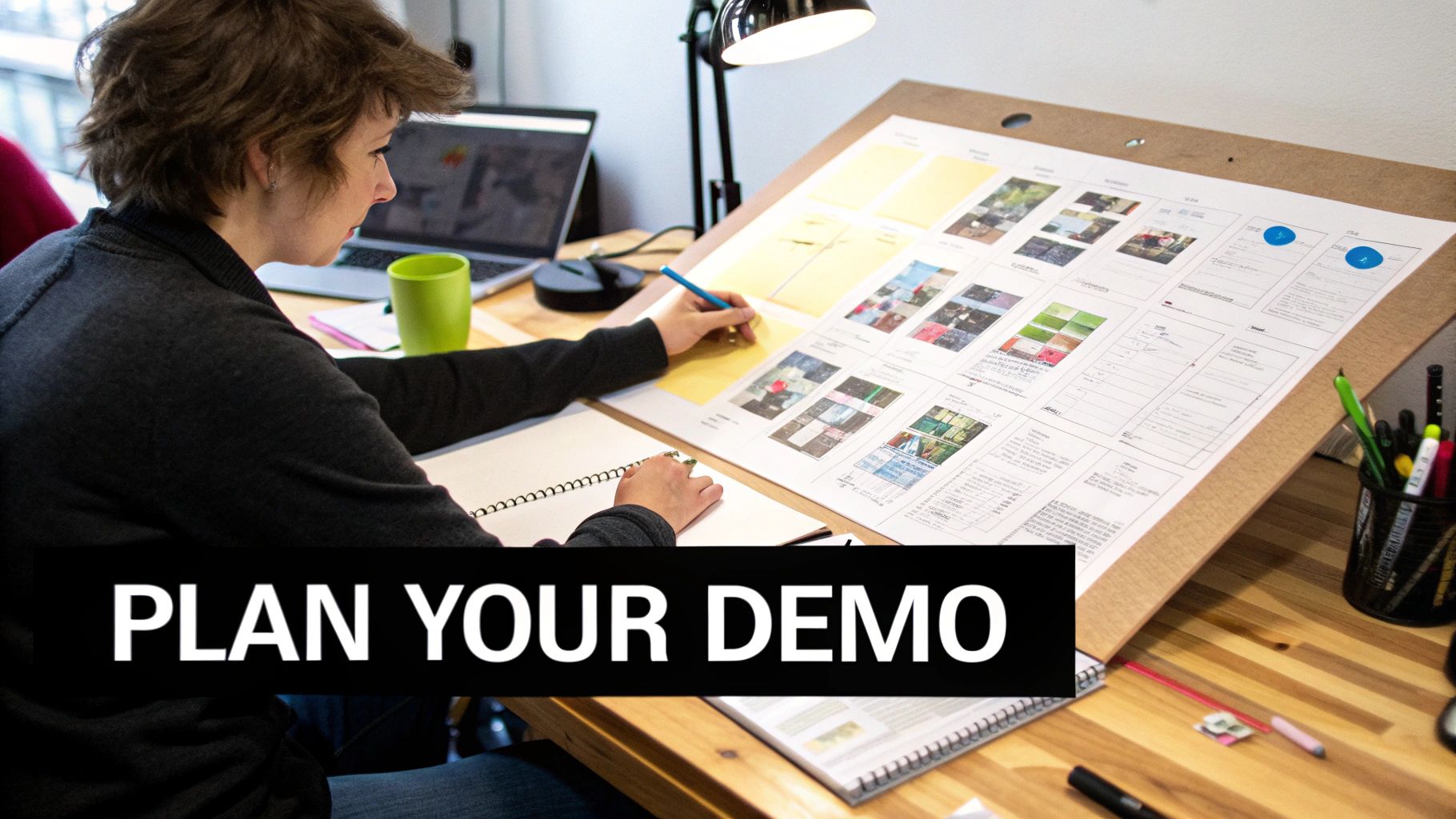
A truly great product video demo doesn't just happen when you hit the record button. It starts much, much earlier. The best videos might feel spontaneous and authentic, but they're always built on a solid foundation of thoughtful planning. Your real goal is to forge a connection, and that only happens when you script and storyboard with your customer in mind.
I've seen so many brands make the same mistake: they get completely bogged down in listing features. Instead, your video needs a story, and that story should be all about solving a real problem for your customer. Think of it less like a technical manual and more like a helpful friend showing them a better way. This approach builds trust, which is infinitely more valuable than a simple spec sheet.
Crafting a Compelling Narrative
Before you even think about a script, you need to get inside your customer's head. I always start by asking a few simple but powerful questions:
- What's their biggest headache? Get specific about the pain point your product eliminates.
- What's the "aha!" moment? What’s the one thing that will make them think, "I need that"?
- How can I show this solution simply? Focus on the most visually compelling use case.
Your script doesn't have to be a work of art. Honestly, a simple, conversational tone almost always works better. I often find a bulleted list of key scenes is more useful than a rigid, word-for-word script. It gives you the freedom to sound natural on camera.
Let's imagine you're selling a smart travel backpack. Your outline could be as simple as this:
- Intro: Show someone clearly frustrated, struggling with a messy, overstuffed suitcase.
- Problem: Voice the annoyance of not being able to find anything. We’ve all been there.
- Solution: Pan over to the sleek, organized backpack, pointing out its clever compartments.
- Demo: In a few quick shots, pack all the same items into the backpack, showing how neatly everything fits.
- Benefit: End with the feeling of relief and excitement—ready for the next adventure.
A great demo tells a story. Your customer is the hero, their problem is the conflict, and your product is the tool that helps them win. This simple narrative structure is familiar and keeps viewers engaged from start to finish.
Storyboarding and Production Basics
Next comes the storyboard, which is just your video's visual map. You don’t need to be an artist. Stick figures or even just a text description of each shot will do the trick. The point is to plan out the visual flow so the story holds together and you don’t miss any crucial angles. This simple step saves so much time and frustration during the actual filming.
And you don't need a Hollywood-sized budget for equipment. Good lighting and clear audio are what really separate a professional-looking video from an amateur one. Natural light from a window is your best friend and often beats expensive lighting kits. For sound, your smartphone's microphone can work wonders if you're in a quiet room and close to the device.
This prep work is more than just a creative step; it's a smart business move. The investment in video advertising is exploding, with global spending projected to hit over $190 billion in 2025. Companies are pouring money into video for one reason: it delivers results. Exploring our guide on creating an effective ecommerce product video can give you even more ideas to make your project a success.
How to Build Your Shoppable Video in Moast
Alright, you've got your video footage. Now for the fun part: turning that raw video into a sales machine using Moast. This is where we’ll add the interactive magic that transforms a standard product video demo into a genuinely shoppable experience. Don't worry, the process is incredibly intuitive.
Think of the Moast editor as your digital workshop. The first thing you'll do is upload the video file you just prepared. Once it's loaded, you can start building out the interactive layer that sits right on top, giving viewers a direct path from watching to buying.
Adding Interactive Hotspots
The secret sauce of any shoppable video is the hotspot. These are the little clickable tags you place on products within your video. Getting them set up is as simple as pausing the video at the exact right moment—maybe when you're pointing out a key feature—and clicking to add a tag.
Let’s go back to our smart travel backpack example. You’d pause the video the instant you showcase that hidden anti-theft pocket. Then, you'd add a hotspot right on the pocket itself.
When a customer clicks that hotspot, a sleek little pop-up appears with everything they need:
- A direct link to the backpack's product page.
- The price and a punchy, short description.
- A can't-miss "Add to Cart" button.
This is huge because it keeps the customer engaged in the video. There’s no friction, no need to open a new tab and hunt for the product. It’s an immediate, seamless jump from "I want that" to "I just bought that."
The real power here is context. You aren't just showing a product; you're giving the viewer a way to purchase it at the exact moment their interest peaks. This perfect timing is what makes shoppable videos so ridiculously effective at boosting conversions.
This visual process flow breaks down the creative journey into clear, manageable stages, from the initial idea to the final review.
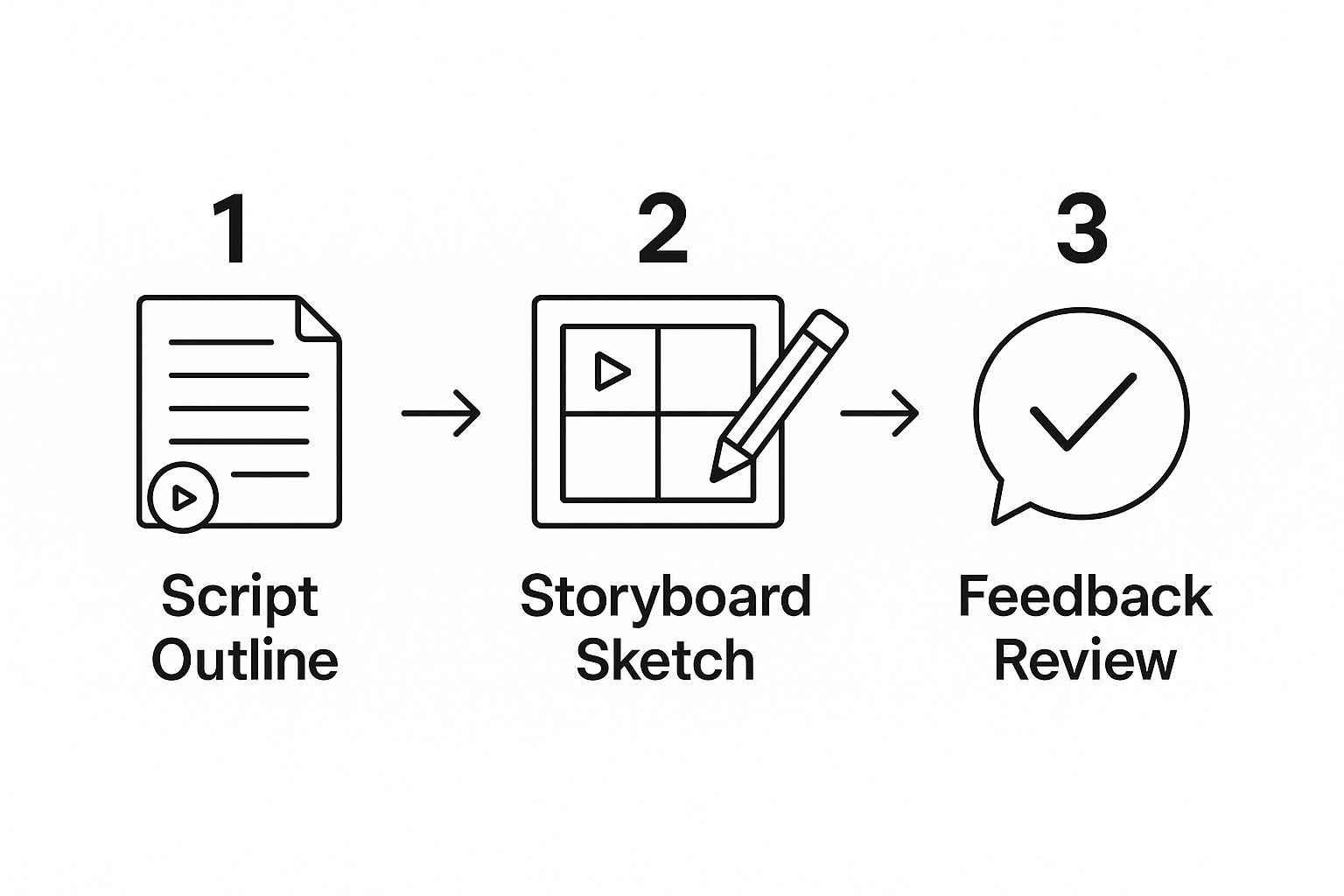
Seeing the entire workflow laid out like this helps make sure no step gets missed, which always leads to a more polished and effective final video.
Customizing Your Video Player
Your brand's look and feel are everything—they build trust and recognition. Moast gets this, which is why it lets you customize the video player to feel like a natural part of your Shopify store, not some clunky, tacked-on gadget.
You can easily tweak the player colors to match your brand's palette, upload your logo, and even change the style of the call-to-action buttons. When everything looks cohesive, it reinforces your brand's professionalism and creates a much more immersive experience for shoppers.
Here's a peek at the clean and intuitive Moast interface where you'll manage your videos.

From my experience, the interface is designed to be super user-friendly. You can create and manage these videos without needing a developer or any technical skills.
The world of video is moving fast, and customer expectations are shifting toward more dynamic content. One recent study found that a staggering 78% of consumers want brands to use more video, but they specifically want interactive and personalized formats. Even more telling, people who engage with this kind of advanced video content are 58% more likely to make a purchase.
This shift really highlights why tools that deliver richer experiences are no longer a "nice-to-have." While Moast is fantastic for adding that shoppable layer, you might use other tools to create the base video itself. To help with that part of the process, checking out a guide to the best AI video generators can give you some powerful options for producing stunning visuals for your product demo.
Getting Your Video Live on Your Shopify Store
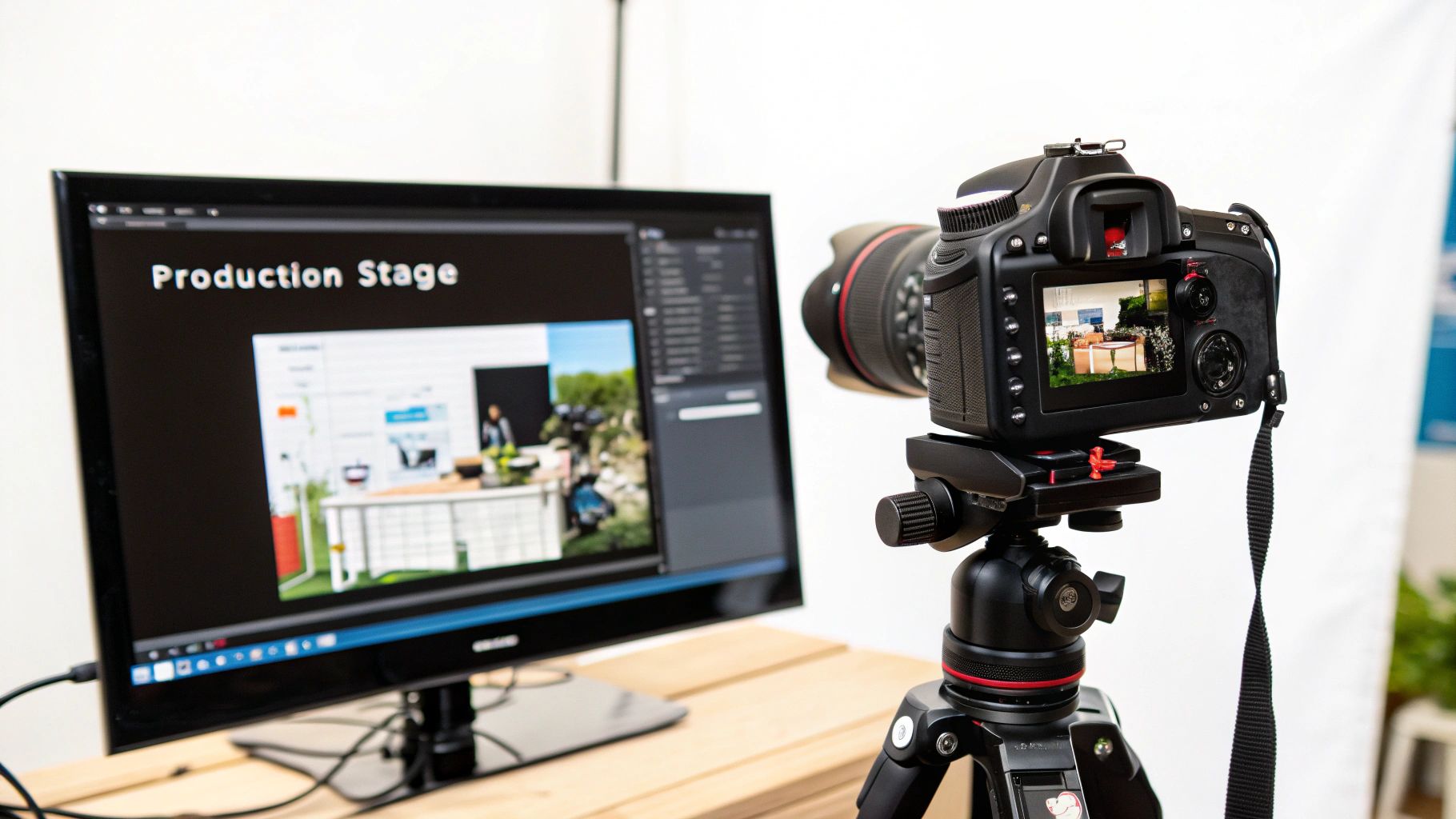
Alright, you've put in the work and created a great shoppable video. That's a huge win. But a video can't sell anything until your customers actually see it. Now it's time for the final, crucial step: getting that video onto your Shopify store. Thankfully, Moast makes this part surprisingly straightforward, so you don't need to be a coding wizard to get it done.
Once your product video demo is ready to go in Moast, you’ll be given a unique embed code. This is just a small snippet of HTML, and it’s the only thing you'll need. The real question isn't how to embed it, but where.
The goal isn't just to stick a video on your site. It's about placing it strategically where it will catch the eye of your most interested shoppers. Honestly, your placement decision can be just as critical as the video content itself.
Choosing the Best Spot on Your Shopify Site
Where should this video live? It really depends on what you're trying to accomplish. Some spots are great for general brand awareness, while others are built for closing the deal with a shopper who's on the fence.
I've found these are the three most effective locations:
- On a Product Page: This is the go-to placement for a reason. When someone is already checking out a specific product, a well-placed video can answer their final questions and give them the confidence to click "Add to Cart." I always recommend putting it right next to or just below the main product photo gallery. It's impossible to miss there.
- On Your Homepage: Got a hot new collection, a perennial bestseller, or a product that just screams what your brand is all about? A homepage video is the perfect way to feature it. Think of it as a dynamic welcome mat that pulls people deeper into your store from the moment they arrive.
- Within a Blog Post: If you run a blog, you're sitting on a goldmine. Embedding a product demo inside a relevant article—like a "how-to" guide or a product roundup—feels completely natural. It enriches your content and gives engaged readers an immediate path to purchase.
No matter which location you pick, the embedding process is the same. Just head to the page editor in your Shopify admin, find the HTML view (look for the < > icon), and paste in the embed code you copied from Moast. Simple as that.
A Quick Word on Speed and Mobile Experience
I know what you're thinking: "Won't a video slow down my site?" It's a valid concern. Site speed is everything, and a clunky video can kill your conversion rates and SEO.
The good news is that Moast’s embed code is built for performance. It's lightweight and designed to load asynchronously, meaning the video itself only loads when a visitor actually clicks to play it. This keeps your initial page load times snappy.
Plus, every Moast video is inherently responsive. It will automatically resize and reformat to look fantastic on any screen, from a giant desktop monitor to the smallest smartphone. With over 70% of e-commerce sales happening on mobile, this isn't just a nice feature—it's essential.
If you want to dive even deeper, our guide on how to add video to a Shopify product page breaks down even more methods and tips. It’s a great resource for fine-tuning your placement to get the most out of every view.
Actionable Tips for a High-Converting Video
You’ve built your shoppable video and embedded it on your site. Nice work! But that's just the starting line. Now comes the fun part: turning those video views into actual sales by focusing on the small details that make a massive impact on your conversion rates.
It all starts before a visitor even hits the play button. I'm talking about the thumbnail. Never, ever let your platform auto-select a random, blurry frame. You need to hand-pick a vibrant, high-quality image that grabs attention and sparks curiosity. A great thumbnail clearly showcases your product and teases a key benefit, making that "play" button irresistible.
Nail Your Calls to Action
Once they're watching, the text inside your interactive hotspots is your direct line to a sale. Generic phrases like "Click Here" are a complete waste of valuable real estate. You have to be specific, create a little urgency, and highlight the benefit.
Instead of the usual suspects, try using copy that gets people excited to act:
- "Shop This Look Now"
- "Get 20% Off This Backpack"
- "Grab Yours Before It's Gone"
See the difference? This kind of language tells the viewer exactly what to expect and why they should do it now. It's a fundamental shift from passive viewing to active shopping.
A great video gets attention, but a great CTA gets the click. Your goal is to remove all friction and hesitation, making the decision to buy feel effortless and exciting for the customer.
Test, Analyze, and Test Again
The best ecommerce brands I've worked with have one thing in common: they don't guess, they test. Moast’s built-in analytics are your new best friend for figuring out what’s working. Seriously, dig into this data. See where people are clicking, where they drop off, and which hotspots are actually driving sales.
If a specific hotspot is getting ignored, that's your cue. Try changing the CTA copy or moving it to a different moment in the video.
Don't be afraid to run A/B tests on the video itself. Pit a short, punchy version against a longer, more detailed one to see which holds attention better. You could even test two different offers in the hotspots—maybe 15% off versus free shipping—to see which one moves the needle. These small experiments are where you'll find the biggest wins.
To really get into the weeds of improving your site's performance, you might want to explore some comprehensive conversion rate optimization strategies. And for more ideas tailored specifically to video, don't miss our guide to ecommerce video marketing.
Still Have Questions About Shoppable Videos?
It's completely normal to have a few questions before you jump in and start creating. Honestly, most store owners I talk to have the same handful of concerns. Let's walk through them so you can move forward with confidence.
What's This Actually Going to Cost Me?
This is usually the first thing on everyone's mind, and the good news is, it's not as much as you think. Forget about hiring a big production crew. You can get fantastic results using the high-powered camera you already have in your pocket—your smartphone. Find a spot with good natural light, and you're halfway there.
Your biggest investment will be your time, especially in the planning and shooting phase. As for the tech that makes the video "shoppable," tools like Moast have made this incredibly affordable, eliminating the need for expensive custom coding. My advice? Don't try to boil the ocean.
Start with a single, killer video for your absolute best-selling product. The ROI from that one video will tell you everything you need to know and will likely fund your next video projects.
What Kind of Results Should I Realistically Expect?
Every store is unique, of course, but the data we have is incredibly compelling. Interactive content simply keeps people engaged longer than a static video. When you add a shoppable layer, you're removing the biggest point of friction in the customer journey—that moment where they have to leave the video, find the product, and add it to their cart.
We've seen studies showing buyers are 2.3x more likely to purchase after watching a product demo. The shoppable feature just pours fuel on that fire. The real question isn't if it will work, but how well it will perform for your customers. The only way to find that out is to give it a try.
Do I Need to Be a Professional Videographer?
Not at all. In fact, sometimes being too polished can work against you. Customers today crave authenticity; they want to see your product as it truly is, being used in a relatable way. You're the expert on your product, not on cinematography, and that's exactly what needs to come across.
Just focus on the fundamentals we covered earlier: have a clear story, make sure your lighting is decent, and capture clear audio. Your genuine passion for what you sell will do the heavy lifting. The goal here is to build a connection with a customer, not to win an award for best director.
Ready to see what a sales-generating video can do for your store? Moast lets you add that shoppable layer to your content in just a few minutes, and it's completely free to start. See the difference for yourself and get started with Moast today.
Related content
Turn your videos into sales
Boost conversions by up to 30% by turning your existing TikToks and Reels into shoppable videos directly on your Shopify store.




